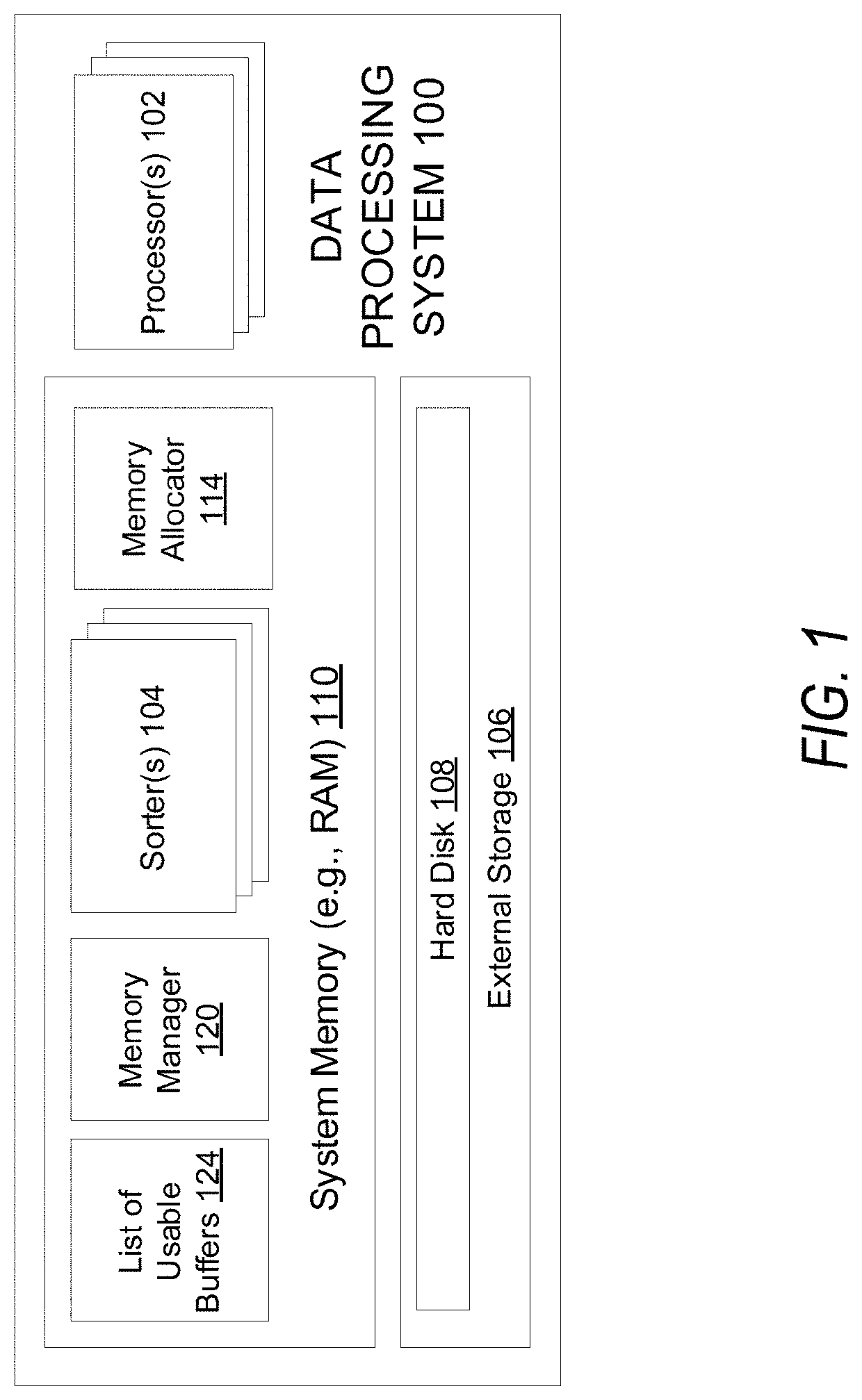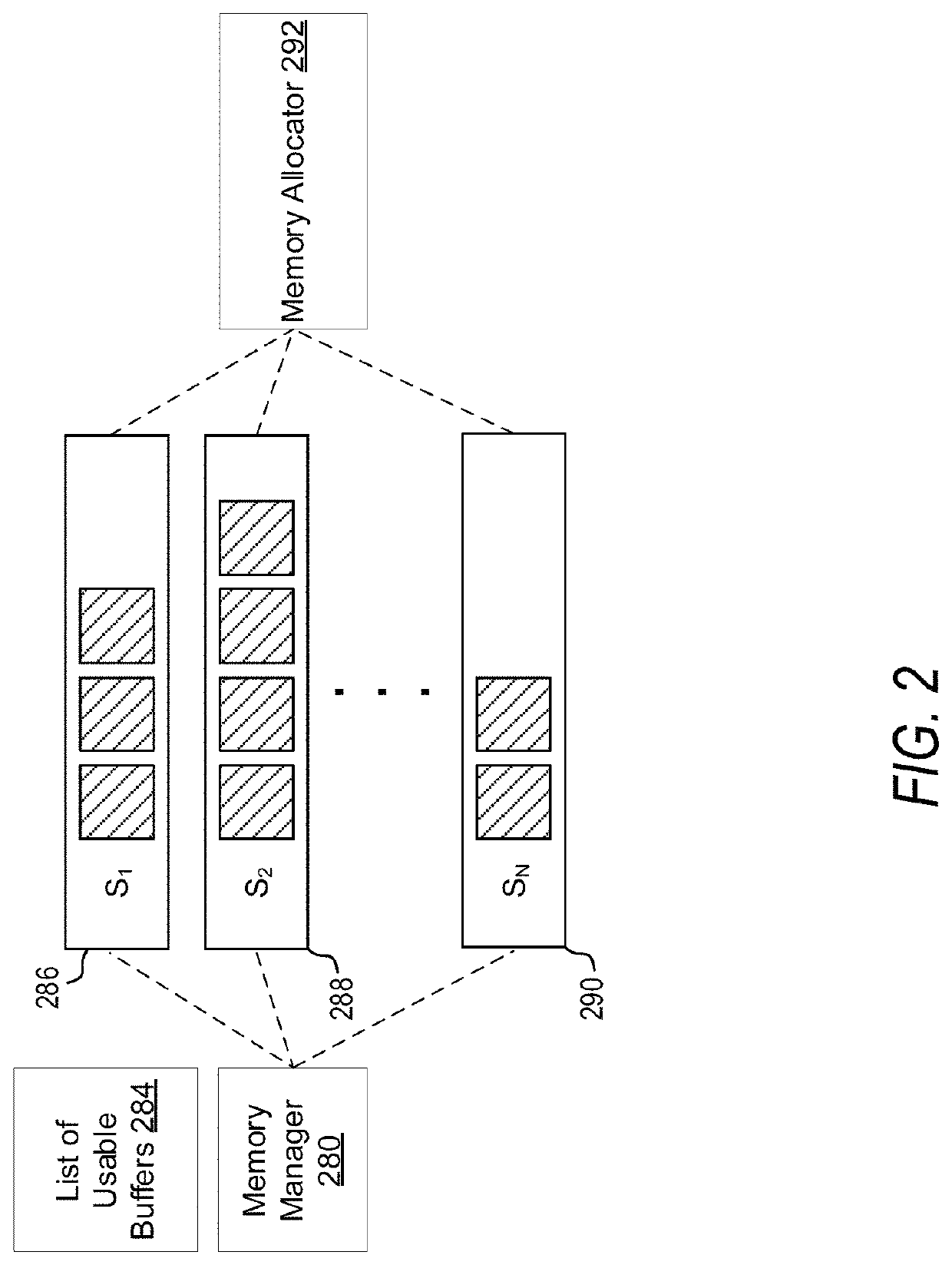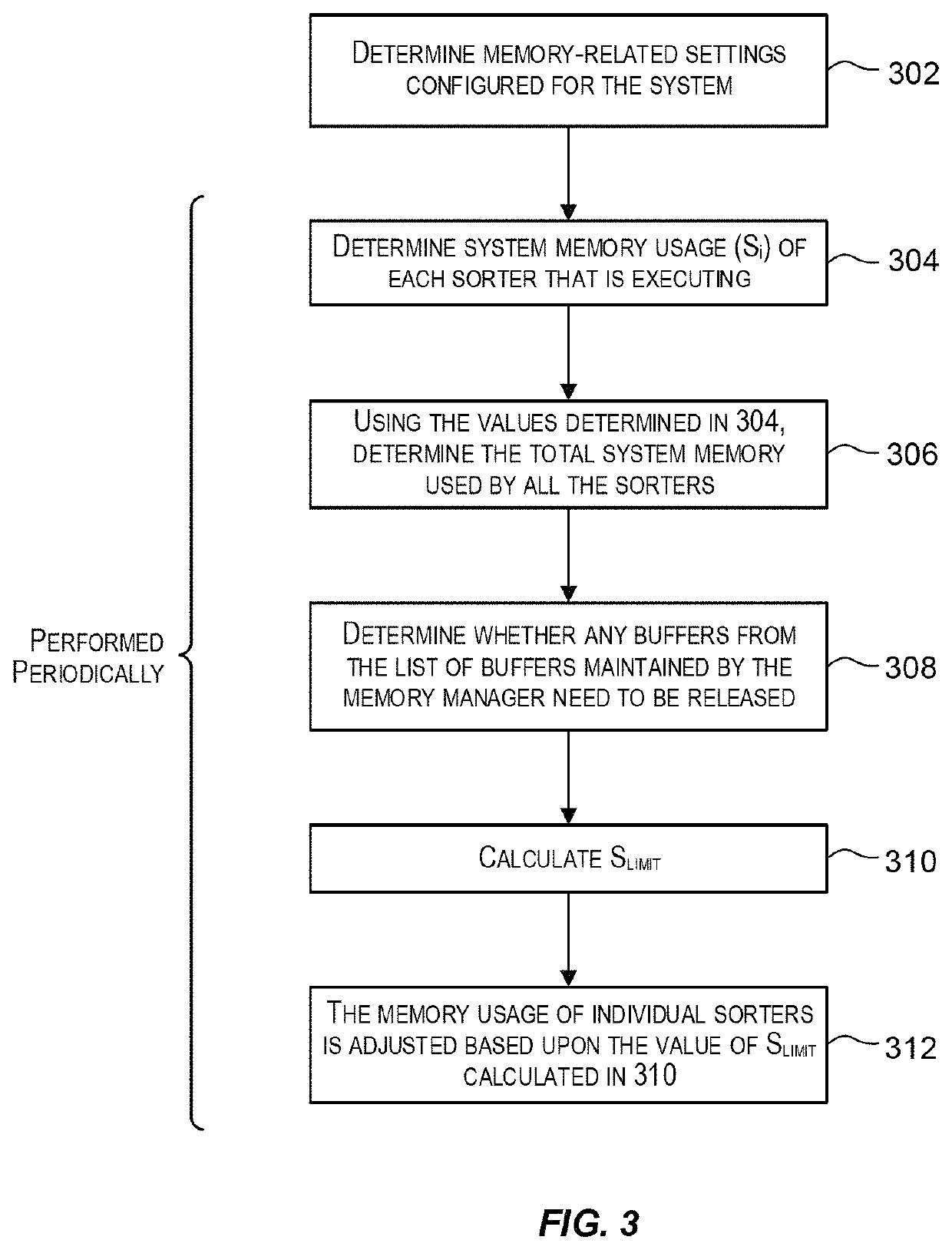Dynamic memory management techniques
a memory management and dynamic technology, applied in the direction of memory allocation/allocation/relocation, multi-programming arrangements, instruments, etc., can solve the problems of system memory allocation to processes executed by a system that is not adaptive to the overall load on the system, underutilization of the physical memory available, and high cost of data spillage to disk and reading back from disk, so as to maximize the amount of memory and minimize data spillage. , the effect of maximizing the amount of memory
- Summary
- Abstract
- Description
- Claims
- Application Information
AI Technical Summary
Benefits of technology
Problems solved by technology
Method used
Image
Examples
example # 1
Example #1
T=45 MB
Smin=5 MB
Smax=40 MB
Assume there are three sorters: S1 using 30 MB, S2 using 20 MB, and S3 using 10 MB. Thus, ΣSi=60 MB. It is further assumed that the sorters are arranged in descending order to facilitate processing.
Based on the above assumptions, Table B shows the progress of the various variables as you progress through the above methodology or algorithm.
[0081]
TABLE BExample of Slimit Calculation for Example #1SiStempRtargetRNSlimitComments01500Initialization.Rtarget = 60 − 45 = 15 MB301515301Process first sorter.Stemp = (30 − 15) / 1 = 152017.515502Process second sorter.Stemp = (50 − 15) / 2 = 17.51017.515502Process third sorter.Since (10 temp)), break out ofthe loop.17.5Stemp = max(17.5, 5) = 17.5. Thisensures that each sorter is able to use atleast the Smin amount of memory.17.5Stemp = min(17.5, 40) = 17.5.17.517.5Slimit = Stemp = 17.5.
In the above example, Slimit is calculated to be 17.5. In response, sorter S1 will reduce its memory usage and free (30−17.5)=12.5...
PUM
 Login to View More
Login to View More Abstract
Description
Claims
Application Information
 Login to View More
Login to View More - R&D
- Intellectual Property
- Life Sciences
- Materials
- Tech Scout
- Unparalleled Data Quality
- Higher Quality Content
- 60% Fewer Hallucinations
Browse by: Latest US Patents, China's latest patents, Technical Efficacy Thesaurus, Application Domain, Technology Topic, Popular Technical Reports.
© 2025 PatSnap. All rights reserved.Legal|Privacy policy|Modern Slavery Act Transparency Statement|Sitemap|About US| Contact US: help@patsnap.com



